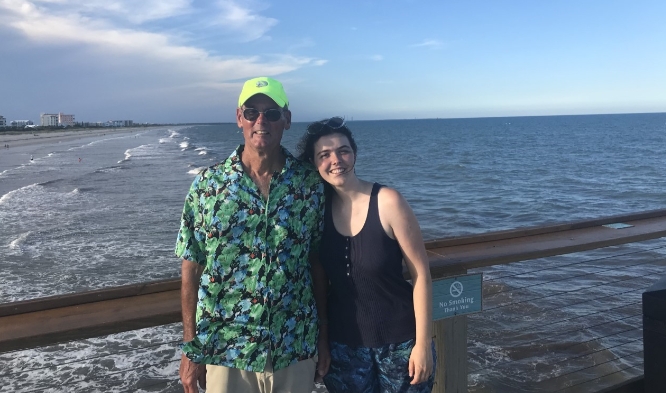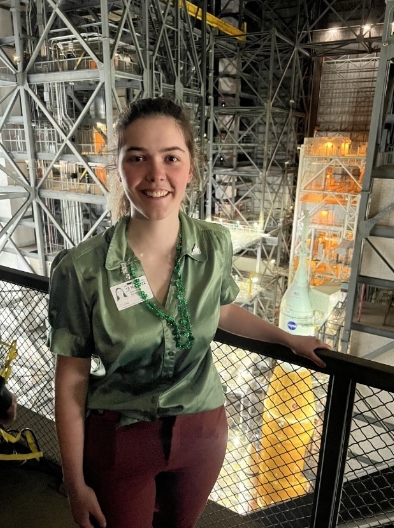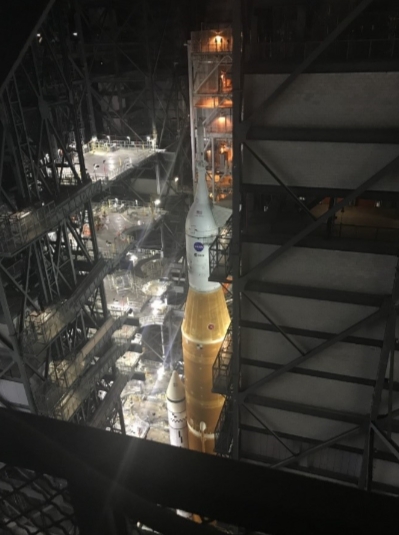Notes from the Road: Sisterhood of the Traveling Space Pants
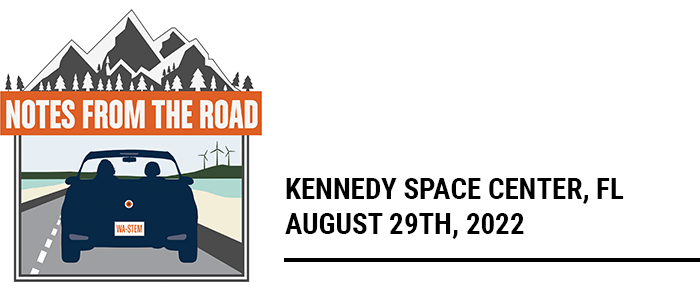
Very early in the morning on August 29th, me, my dad, and an old pair of jeans were sitting in the Causeway bleachers at Kennedy Space Center (KSC), waiting for a rocket to launch. As a former NASA intern, my last gig before becoming Washington STEM’s Communications Coordinator, I had spent four months writing for a young audience about the Artemis I launch. Now, my Dad and I were about to see it happen for real. Across the lagoon from us, the Space Launch System rocket (SLS) glittered in floodlighting, all dressed up and ready to shoot into space. We were ready too, equipped for the long day ahead with sunscreen, bug spray, bottled water, beef jerky, and lucky space pants.
…Okay, maybe I need to back up a little on that last one. The space pants were on loan from my mom — her favorite pair of jeans, worn daily for years until the denim became pajama-soft. When the jeans finally started to sprout holes, she patched them with space motifs: a felt astronaut, a cotton space capsule, a corduroy rocket blasting off into a denim sky. Boom! The space pants were born!
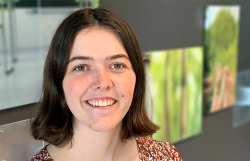
Author:
Isabelle Haines
Isabelle is Washington STEM’s Communications Coordinator and self-proclaimed math nerd.
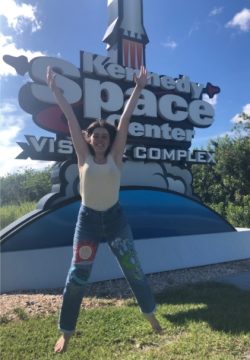
As Dad and I waited on the Causeway bleachers, I was definitely having a How-did-I-get-here? moment. What were some of the factors and opportunities that led to this point in my early career? Mentally rewinding, I thought of my NASA mentor, a seasoned communications strategist who modeled thoughtfulness, creativity, and professionalism. In college and high school, I had STEM professors and teachers as well as guidance counselors who helped me understand my postsecondary and career options. But even before I started kindergarten, math, science, and space were a big part of my life. This was largely because of my parents.
Space was an early fascination for both of my parents. Their childhoods coincided with the Space Race, a period of national excitement and tension my dad describes as “the Super Bowl, but times ten, and for years.” As they both pursued careers in the maritime industry, the celestial hemisphere remained relevant. This was in the days before GPS or navigational calculators were widely available. On the open ocean, a clear sky, a basic understanding of trigonometry, and a sextant were the difference between knowing exactly where you were and being completely lost.
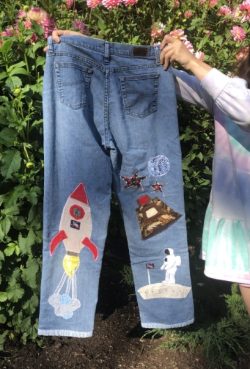
My parents prioritized early math identity for my sister and I because they knew firsthand how it could guide us, either across an ocean or towards countless career paths. On the ceiling of our childhood room, Mom arranged glow-in-the-dark stars into the constellations she used to navigate by. Sometimes, she even pulled out her old sextant for us, telling stories of how a little trig had saved her most perilous voyages. In those moments, math felt like a superpower that anyone could hone. Even though I didn’t end up pursuing a career in math, that background helped me find an internship at NASA, which in turn helped me make the transition from college to early career. In this way, a positive early math identity can help shape everything that comes after.
I am fortunate. I was born into a family for whom math was already part of our lives. I grew up with two parents who supported me and my sister on our journeys and who helped me achieve a postsecondary credential. And I had access to educational supports and opportunities, like my NASA internship, that prepared me for my postsecondary education. But not all students have access to those opportunities and supports.
Here at Washington STEM, the work we do at the systems level — from cradle to career — helps ensure that regardless of your background, where you live, or the color of your skin, you have access to opportunities to develop early math skills, meaningful engagement in STEM, and have equitable access to college and career pathways resources. Here in Washington, where STEM careers abound, these resources and investments are critical because it is these very students that will serve as the next generation of computer programmers, geologists, water conservation engineers, permaculture specialists, and yes, even rocket scientists. Guaranteeing these opportunities for all of our students is the key to launching them into successful futures.
By sunrise, the atmosphere at the Causeway shifted from reserved and sleep-deprived to something like a cosmic tailgate party. As more guests arrived, the ground became quilted over with picnic blankets and beach towels, and a small army of folding chairs accrued by the lagoon’s edge. We were thirty minutes away from the start of the launch window. Twenty minutes. Ten. And then at T-minus-nothing — the launch was scrubbed. And it was more than lucky space pants can fix.
In the end, it would take the Artemis team a few days to safely prepare for another launch, and the next attempt was rescheduled for the day after Dad and I flew back to Seattle. Although our morning at KSC wasn’t what we’d hoped, it was time to spend together, and that’s pretty good, too.
This Blog is part of the “Notes from the Road” series, featuring personal accounts of our work and reflections, and tangible examples of what the process of working at the systems level looks like. Stay tuned for more “Notes from the Road” blogs!
